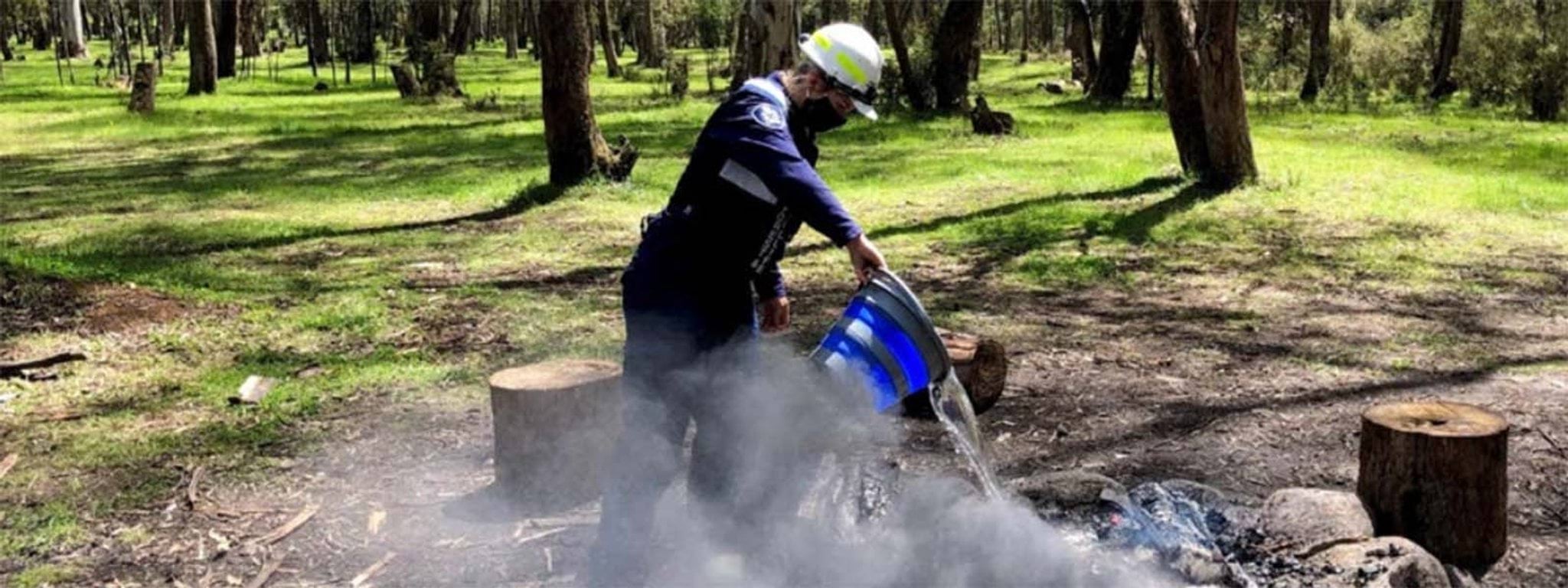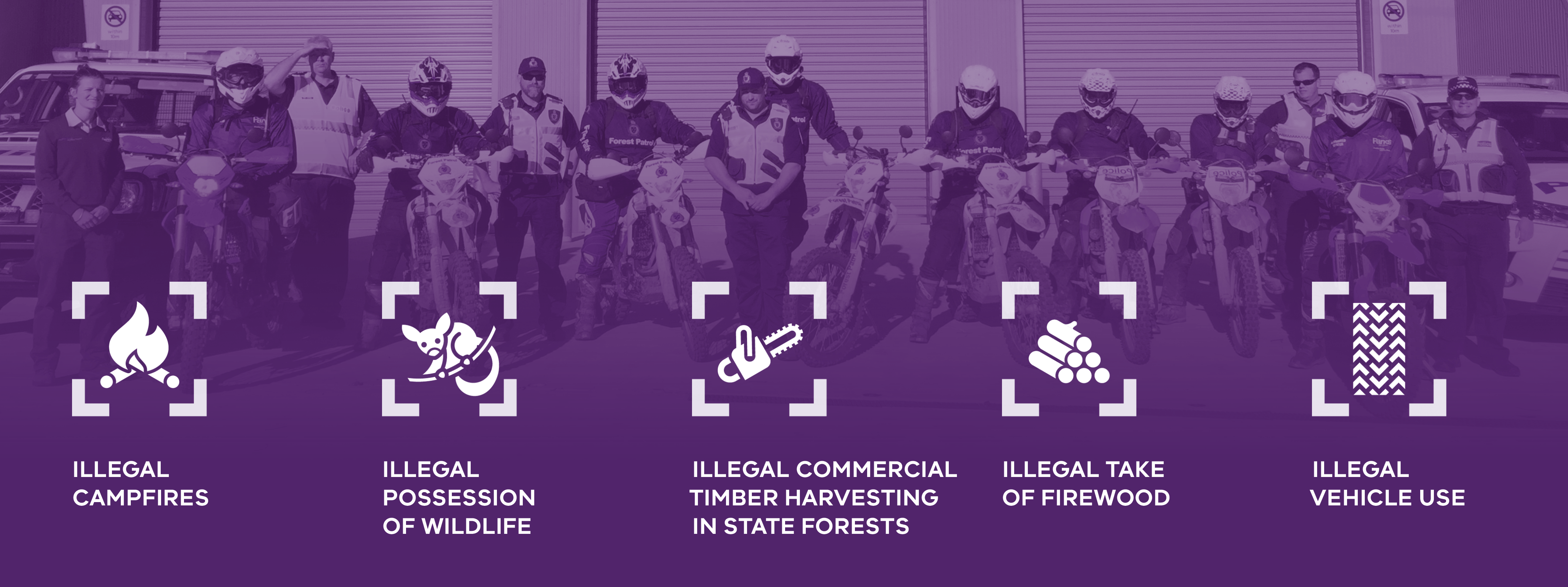This plan outlines our approach for managing priority regulatory risks during 2021 – 2022. The plan sets out our state-wide regulatory priorities. We will enforce compliance across all our regulatory responsibilities but will prioritise our effort for these state-wide priorities.
Regulatory risks
Regulatory risks usually evolve over time but can change quickly when there is a change in the environment or new information comes to light that allows us to see a risk in a new way.
Regulatory risks are events or activities that could harm our:
- natural and heritage values
- equitable and safe access to public land and use of natural resources
- sustainable communities – social, economic and environmental.
Establishing context
A wide range of information and sources are considered when we establish the context for our risk assessment to determine our regulatory priorities. This includes:
- identifying new and emerging trends
- conducting research
- consultation with stakeholders
- the experience and knowledge of our staff
- working with our regulatory partners.
Assessing risk
Regulatory risks are identified as events or activities that could prevent DELWP from achieving its outcomes.
Assessing risk:
- reduces the impact of major bushfires and other emergencies on people, property and the environment
- promotes a healthy, resilient and biodiverse environment
- enables productive and effective land management
Risk prioritisation is based on the likelihood of the risk event occurring and the consequences or impacts if the risk occurs. A wide range of information is considered in the context of the frequency, timing and potential harm of the events or activities.
The Conservation Regulator assesses a matrix of risk statements, with those that receive the highest ratings translated into our regulatory priorities.
At the strategic level, we review 18 categories of risks across 6 themes that include:
- biodiversity (which covers a wide range of matters relating to protected flora and wildlife)
- bushfire prevention
- recreational and social use of public land
- dumping of waste on public land
- commercial use of public land
- timber harvesting.
Top risks for 2021 – 2022
The regulatory priorities are the result of a detailed risk analysis. The risks identified for 2021 – 2022 reaffirm previous trends and include:
- unauthorised firewood collection in commercial quantities, including personal use where it negatively impacts the environment
- the illegal possession and trade of wildlife, leading to the undue suffering of wildlife or loss of individuals, populations or species
- campfires on total fire ban days, or that are unattended or poorly constructed
- illegal vehicle use on public land, leading to habitat fragmentation and infrastructure destruction, and the loss of equitable and safe access to public land
- regulating native timber harvesting, where there is a loss of habitat, ecosystem function, or impact on wildlife.
In response to these risks, and within the scope of the Conservation Regulator’s responsibilities, we will focus on the following regulatory priorities:
- illegal campfires
- illegal possession of wildlife
- illegal commercial timber harvesting in State forests
- illegal take of firewood
- illegal vehicle use.
Illegal campfires
The risk of bushfires in Victoria is predominantly a threat from November until March each year, and while 2020-21 was wetter than usual, the long-term trend is for hotter and dryer conditions leading to more intense bushfire seasons, such as the devastating 2019-20 season.
Currently, we are seeing more people spend time on public land due to travel restrictions, and the desire to escape crowded, urban areas. In some places, we have seen weekly visitor numbers peak at more than double what they were for the same time of year prior to the onset of the coronavirus pandemic. This is a significant increase in the likelihood of people starting campfires that are unsafe and illegal.
The increase in the frequency of campfires increases the likelihood that there will be more frequent incidences of non-compliance that are more likely to lead to bushfires.
The Conservation Regulator will continue to prioritise the safety of communities and the protection of the environment from the devastating impact of bushfires by reducing risks from unauthorised and poorly managed campfires. The Conservation Regulator’s authorised officers patrol public land in partnership with Forest Fire Management Victoria to detect illegal campfires, inform and educate the public, and issue infringements in accordance with our Compliance and Enforcement Policy.
Illegal possession of wildlife
Wildlife is an essential part of our environment and essential to the functioning and health of our ecosystems. The Conservation Regulator has an important role in regulating the use, treatment, trade and control of wildlife.
The loss of key wildlife species can lead to the collapse of ecosystems, which we rely on for clean air, water, the production of food, and a range of economic activity, including eco-tourism and agricultural systems.
The conservation and sustainability of wildlife are under increasing pressure from threats such as loss and fragmentation of habitat, introduced pests such as foxes and cats, illegal take from the wild, wildlife trafficking, climate change and growing human populations over the longer-term coinciding with shrinking native habitats.
Illegal trafficking and possession pose a significant threat to our native species, which can fetch very high prices in foreign markets and domestically.
The harms include:
- Suffering of individual animals due to the methods used to transport animals across borders are often cruel and causes suffering and death to individual animals.
- Permanent damage to habitat, such as people removing hollows or stones while searching for wildlife to take.
- Damage to ecosystems, with the removal of animals making it difficult for wildlife already under pressure from a changing environment to recover.
- Illegally kept animals may not be appropriately cared for, and the close interaction with wildlife can facilitate the spread of disease.
- Animals illegally released may also become invasive pests if it occurs in an area where they are not otherwise endemic or they may introduce foreign pathogens to populations with no natural immunities.
The Conservation Regulator will respond swiftly and intently to all serious and significant incidents of wildlife crime.
Illegal commercial timber harvesting in State forests
VicForests is the State-owned business responsible for the harvest, commercial sale and re-growing of timber from Victoria’s State forests on behalf of the Government. Timber harvesting in State forests is permitted by law, but this must be done in a way that is compliant with the law.
The Conservation Regulator regulates commercial timber harvesting in State forests in accordance with the Code of Practice for Timber Production 2014 (the Code) and the Management Standards and Procedures for Timber Harvesting Operations in Victoria’s State Forests 2014 to ensure forest values are protected for current and future generations.
Unauthorised timber harvesting can cause serious harm to flora and fauna.
The 2019-20 bushfires significantly impacted a number of species and communities in forest-dependent environments. In May 2021 DELWP released a Threatened Species and Communities Risk Assessment (TSCRA) to ensure interim protections to reduce the risk of timber harvesting operations causing serious or irreversible harm to the environment in a post-fire landscape.
The Conservation Regulator will continue to monitor and enforce timber harvesting legal obligations focusing on areas of highest environmental risk.
Illegal take of firewood
The illegal take of firewood for personal use or in commercial quantities leads to the destruction of wildlife habitat.
Preventing the destruction of habitat is critically important at a time wildlife populations and ecosystems are still recovering from bushfires while climate change is leading to hotter and drier conditions.
The Conservation Regulator has undertaken an in-depth analysis of the illegal take of firewood in Victoria, which we are using to inform our strategy over the coming year and beyond.
This work will include improving how we work with other regulatory agencies, operational improvements, and the development of better sources of intelligence.
Reports of illegal firewood collection have increased by up to 200% in 2021. This increase in reports is the result of multiple factors, including improved detection and reporting, and increased demand.
Illegal vehicle use
The legal use of vehicles on Victoria’s public land contributes to our health and wellbeing by providing opportunities for recreation and supporting social cohesion. Nearly 40% of Victoria is public land, including State forests, which are great places to use vehicles like 4WDs, trail bikes and mountain bikes in approved areas.
However, the use of these vehicles has the potential to cause serious damage to the environment, cultural sites, and restrict the fair and equitable use of public land. Consequently, the use of vehicles on public land is a regulated activity.
Illegal vehicle use on public land usually involves driving off-road on walking tracks, through the bush or areas closed to the public and poses serious risks and issues, which include:
- Damage and destruction to the environment, ecosystems and harm to wildlife; cultural sites; public assets and infrastructure such as gates, roads, fences and signage
- Spread of soil-borne pathogens
- The high financial costs for the remediation of public assets and infrastructure
- The safety of those engaging in illegal behaviour, such as the increased risk of injury
- The safety and disturbance of other users of public lands, such as those camping or hiking
- Hindering emergency services due to damage and destruction to roads
Population growth in the longer term, the lower cost of recreational vehicles and a cultural shift away from organised sport towards casual, informal forms of recreation have driven an increase in off-road activities on public land.
The Conservation Regulator will continue to partner with co-regulators and reduce the risk to our environment and ensure fair and equitable use of our public land.
Updated






